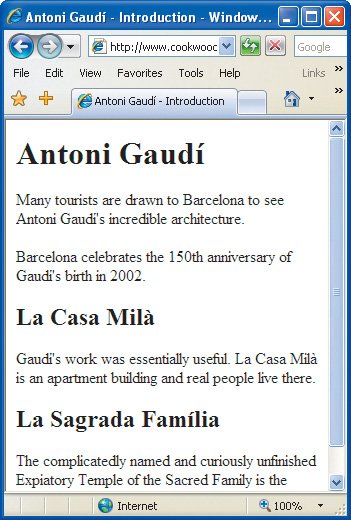Breaking up a Page into Divisions
| Breaking up your page into divisions allows you to apply styles to an entire chunk of your page at once. This is particularly useful for designing layouts with CSS (see page 169). To break up a page into divisions:
Figure 3.16. There is one large enclosing division (that begins with the level one header and goes to just before the closing body tag) and two inner divisions (that include the level two headers and their paragraphs). Figure 3.17. You generally can't see the effect of divisions until you add styles (see page 127). Then they really shine. You can see this page with styles on my Web site (see page 26).
|
EAN: 2147483647
Pages: 340


 Tips
Tips